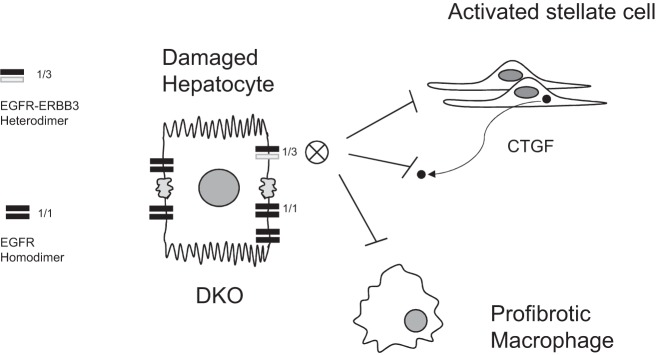Fig. 6.
Schematic summarizing the major finding of this study. ERBB signaling has been shown to stimulate the proliferation and migration of stellate and fibrogenic cells in vitro; however, we show that loss of EGFR or ERBB3 in hepatocytes diminishes fibrosis. We hypothesize that, in the damaged liver, hepatocellular EGFR-ERBB3 heterodimeric signaling (as opposed to the more numerous EGFR homodimers) blocks inflammation and fibrogenesis. Because connective tissue growth factor (CTGF) is a ligand for EGFR, the DKO hepatocyte would also not be responsive to stellate cell-generated CTGF through EGFR binding and signal transduction (although CTGF is a mosaic ligand capable of binding to several different receptors through alternative domains). Paracrine release of CTGF by activated stellate cells may be a mechanism for stellate cell cross talk with damaged hepatocytes as well as EGFR-bearing macrophages in fibrotic areas.

